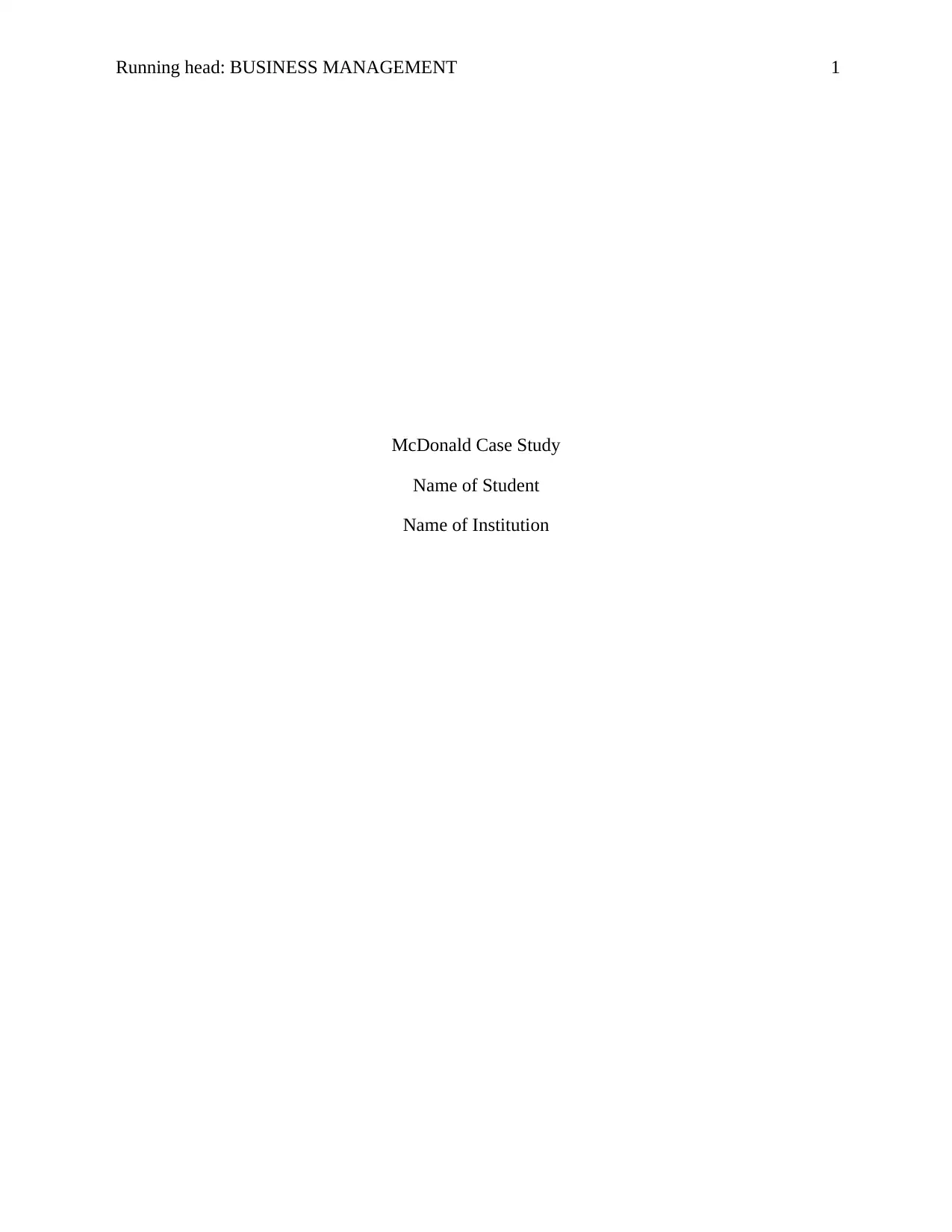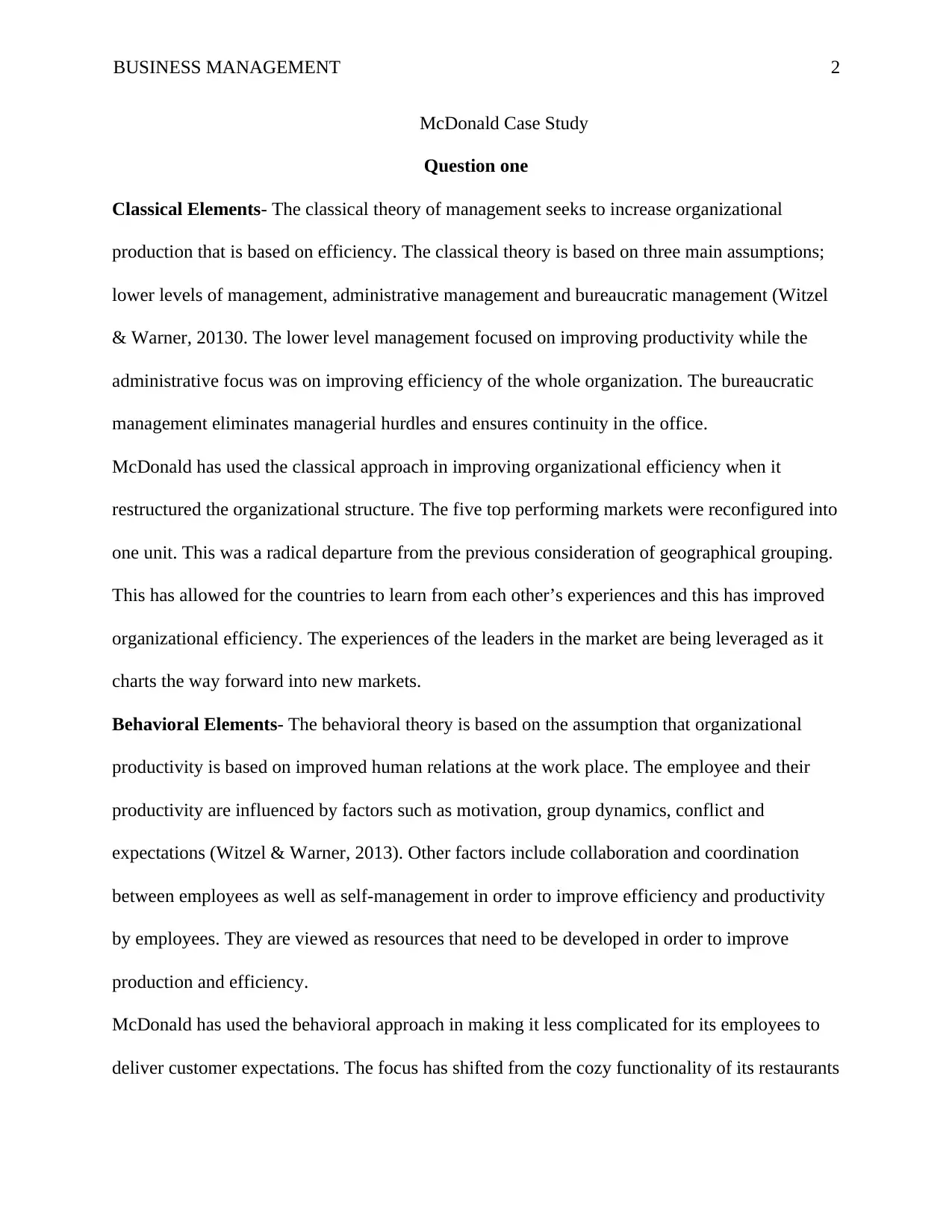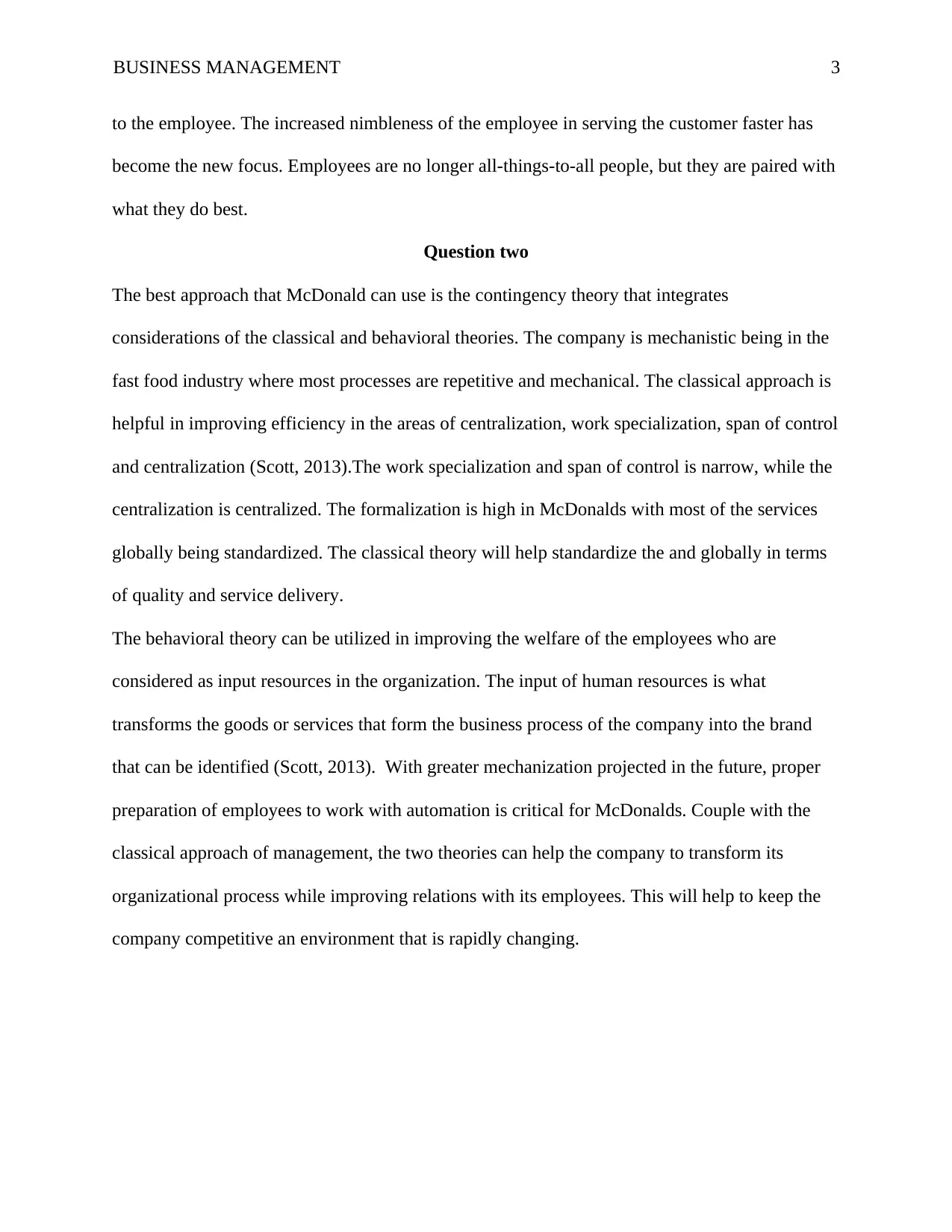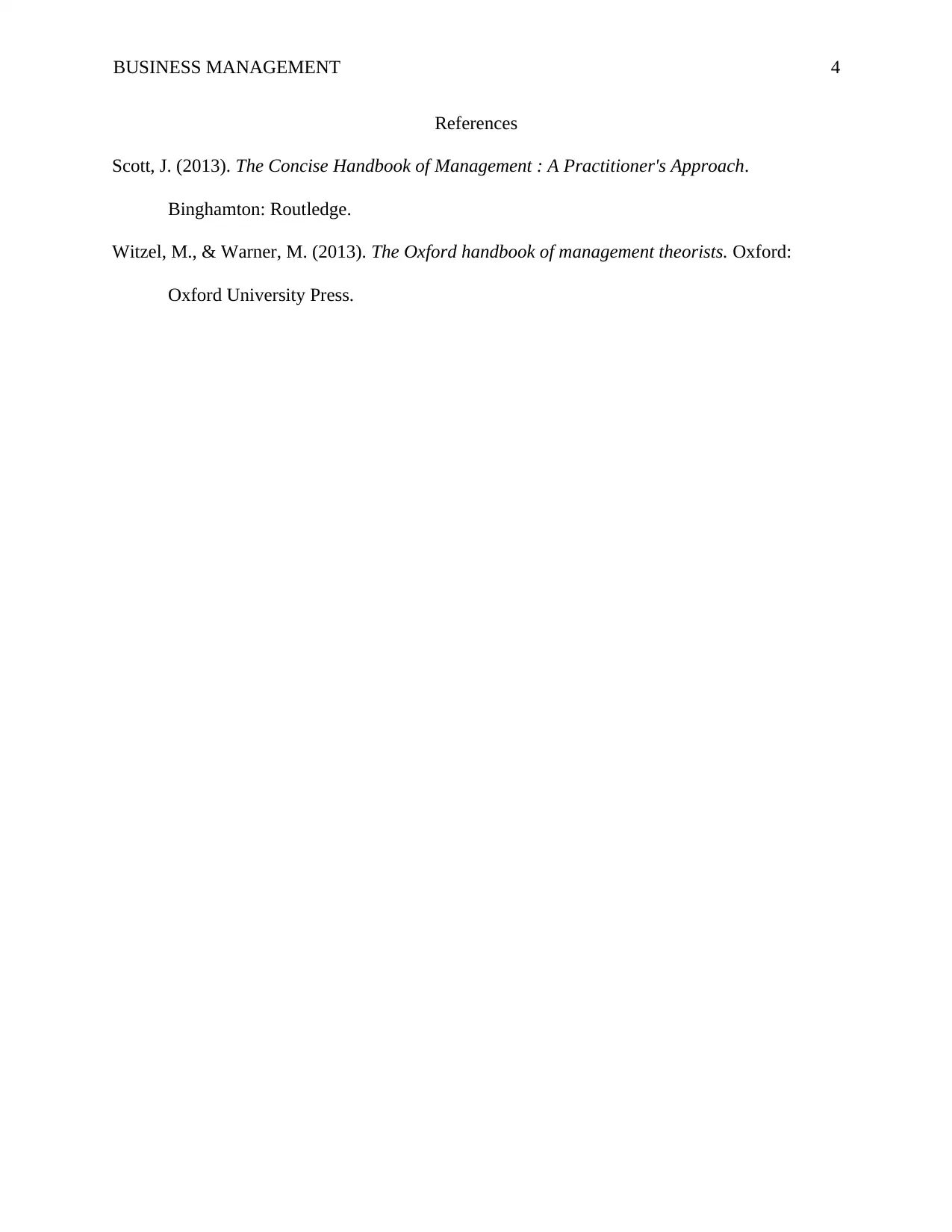BUS 101: McDonald's Case Study - Management Theory Application
VerifiedAdded on 2020/03/28
|4
|628
|71
Case Study
AI Summary
This case study examines McDonald's application of management theories to improve organizational efficiency and employee relations. It analyzes the use of classical, behavioral, and contingency theories within the company. The classical theory is applied through restructuring, centralizing operations, and leveraging experiences of the leaders. The behavioral approach focuses on enhancing employee performance by streamlining tasks and improving customer service. The contingency theory is suggested as the best approach, integrating elements of both classical and behavioral theories to address the company's mechanistic structure and the need for employee development in an increasingly automated environment. The analysis emphasizes the importance of work specialization, span of control, and standardization while highlighting the need for employee preparation for future automation, contributing to McDonald's competitiveness in a rapidly changing market. The provided references include works by Scott (2013) and Witzel & Warner (2013).
1 out of 4










![[object Object]](/_next/static/media/star-bottom.7253800d.svg)